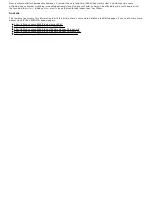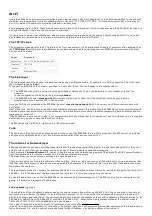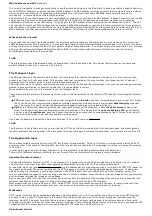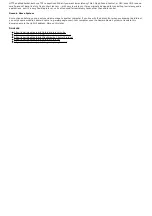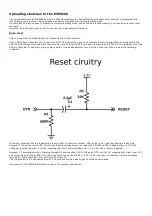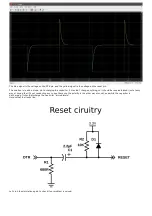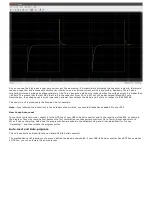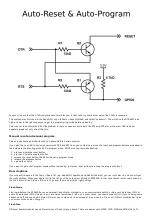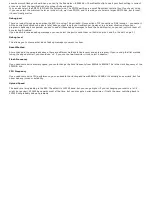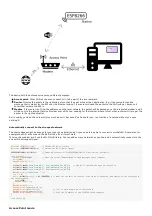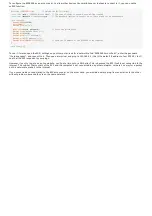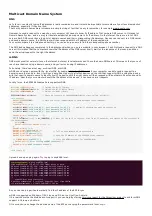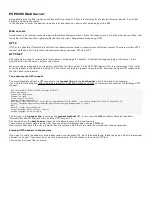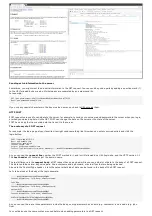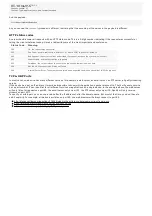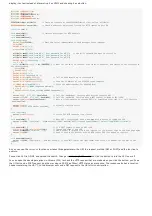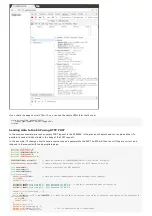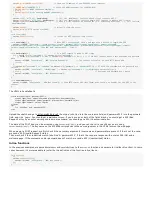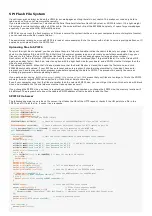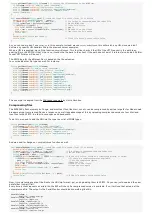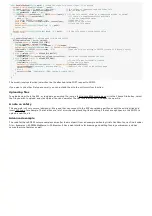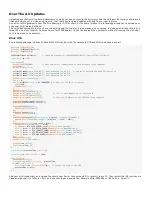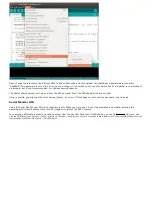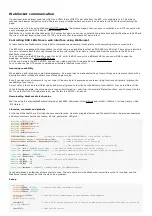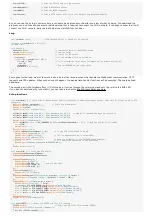
ESP8266 Web Server
Being able to ping the ESP is quite an achievement if you look at it from a technical point of view, but for most people, it's not that
exciting, and not really useful.
In this chapter, I'll cover the basics of a web server, and teach you how to host a web page on the ESP.
Web servers
A web server is an Internet-connected device that stores and serves files. Clients can request such a file or another piece of data, and
the server will then send the right data/files back to the client. Requests are made using HTTP.
HTTP
HTTP or the Hypertext Transfer Protocol is the text-based protocol used to communicate with (web) servers. There are multiple HTTP
request methods, but I'll only cover the two most widely used ones: GET and POST.
HTTP GET
GET requests are used to retrieve data from a server, a web page for instance. It shouldn't change anything on the server, it just
gets the data from the server, without side effects.
When you open a webpage in your browser, it will take the URL and put it in an HTTP GET request. This is just plain text. Then it will
send the request to the right server using TCP. The server will read the request, check the URL, and send the right HTTP response for
that URL back to the browser.
The anatomy of a GET request
The most important parts of a GET request are the request line and the host header. Let's take a look at an example:
If you click the following link: https://www.w3.org/Protocols/rfc2616/rfc2616-sec5.html, your browser will send out the following HTTP
request:
GET /Protocols/rfc2616/rfc2616-sec5.html HTTP/1.1
Host: www.w3.org
Connection: keep-alive
Pragma: no-cache
Cache-Control: no-cache
Upgrade-Insecure-Requests: 1
User-Agent: Mozilla/5.0 (X11; Linux x86_64) AppleWebKit/537.36 (KHTML, like Gecko) Chrome/56.0.2924.87 Safari/537.36
Accept: text/html,application/xhtml+xml,application/xml;q=0.9,image/webp,*/*;q=0.8
DNT: 1
Referer: https://www.google.be/
Accept-Encoding: gzip, deflate, sdch, br
Accept-Language: en-US,en;q=0.8
The first line is the request line: it contains the request method: GET, in this case, the URI or Uniform Resource Identifier:
/Protocols/rfc2616/rfc2616-sec5.html, and the HTTP version: 1.1.
The second line is the host header, it specifies the domain name of the host (server).
There are many other headers as well, but they're not really important when using an ESP8266.
Most servers will check if the URI is a file on their file system, and if that's the case, they'll send that file as a response.
Viewing HTTP headers in the browser
If you want to check the headers your browser sends, you can press F12, go to the network tab, reload the page, and click the request
you want to inspect. If you want, you can click 'view source', this will show you the actual HTTP text.
Here's what that looks like in Chrome:
Содержание ESP8266 SDK
Страница 4: ......
Страница 22: ......
Страница 32: ...It automatically detected that it had to send the compressed versions of index html and favicon ico ...
Страница 50: ......

